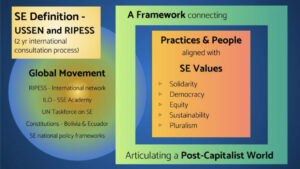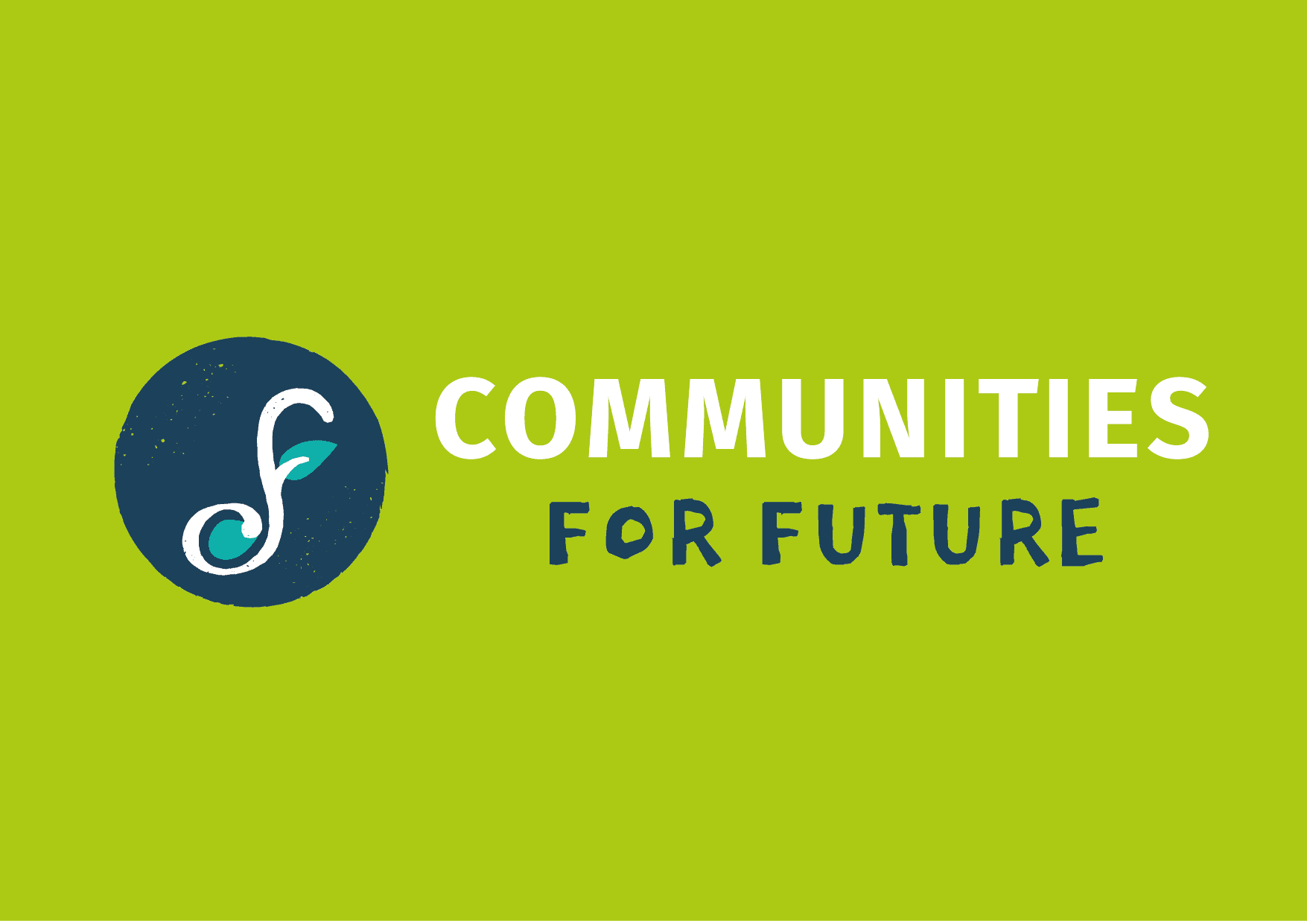Source: https://www.shareable.net/a-shareable-explainer-what-is-the-solidarity-economy/
Emily Kawano, founder and co-coordinator of the US Solidarity Economy Network and member on the board of RIPESS (the Intercontinental Network for the Social Solidarity Economy) for almost a decade, has written an article, that explains why, in these times of crises, Solidarity Economy offers a transformative pathway to a new system beyond capitalism by presenting new narratives, new models, and new paradigms.
————————————————–
A Shareable explainer: What is the Solidarity Economy?
We stand at a historic moment, a crossroads in the history of humanity and Mother Earth. Rarely has there been a convergence of so many crises, from climate catastrophes to fascism.
These are scary times, but crises also create opportunity. The last two major economic crises, the Great Depression and the stagflation of the late 1970s, resulted in fundamental shifts in the dominant capitalist economic model. Today, people’s faith in the status quo is shaken. There’s a growing openness to new narratives, new models, and new paradigms: the solidarity economy offers a transformative pathway to a new system beyond capitalism.
What is the Solidarity Economy?

The solidarity economy (SE) is a global movement to build a world that centers people and the planet rather than maximizing private profit and endless growth. It is not a blueprint theorized by academics in ivory towers, but is grounded in concrete practices that exist all around us. Some practices are old, while others are emergent innovations. Some would be considered alternative, while others are quite mainstream. There is a large foundation upon which to build. The trick is to connect these currently atomized practices so they work together to transform our whole economic system (and indeed world).
[…..]
What are the key elements of the Solidarity Economy?
While there is a tremendous latitude within the solidarity economy to encompass a wide range of approaches—grounded in the local realities of culture, language, history, political-social-economic contexts, and the environment—there are elements of the solidarity economy definition that apply across these specificities:
[…..]
What are “imaginal cells” of the Solidarity Economy?

When a caterpillar spins its chrysalis, a magical process begins. Its body starts to break down into a nutrient-rich goop. Within this goop are imaginal cells, and these imaginal cells have a different vision of what they can become. They are so different, they are attacked and killed by what remains of the caterpillar’s immune system.
What are examples of the Solidarity Economy in the United States?
In Seattle, Washington, the city allocated $30 million to a participatory budgeting process that gave community members a say in how the money should be used. Twelve million dollars was directly diverted from the Seattle Police Department, while the remaining $18 million came from the Mayor’s Communities Initiative Fund.
[…..]
What are examples of the Solidarity Economy internationally?
In Brazil, the term “economia solidária” gained prominence as various social movements and community organizations sought alternatives to the neoliberal economic policies of the 1980s and 1990s. These initiatives were focused on creating economic systems based on solidarity, cooperation, and social welfare, rather than purely on profit and market competition. Brazil now has one of the most extensive networks of solidarity economy enterprises in the world, supported by strong government and social movements. The Brazilian Forum of Solidarity Economy facilitates numerous initiatives, including worker cooperatives, community banks, and fair trade organizations. The government has also implemented supportive policies and national programs to promote the solidarity economy.
[…..]
How is the Solidarity Economy different from the Sharing Economy?
The sharing economy, as it was initially conceptualized, focuses on the sharing of access to goods and services, often facilitated by digital platforms. While it includes community-driven sharing practices like car-sharing, tool libraries, and community gardens (which we love at Shareable), it has unfortunately become associated with extractive commercial platforms like Uber, Airbnb, and Lyft. Although sharing resources often leads to more efficient use of assets and reduced consumption, many commercial sharing platforms have been rightfully critiqued for prioritizing profit without necessarily fostering genuine communal sharing or ensuring fair labor practices.
The author closes the article with the following conclusion:
The convergence crises has created a rare opportunity to push for a new system beyond capitalism. There is a huge foundation of imaginal cells that already exist within the current system and new ones are emerging all the time. Many of these imaginal cells already see themselves as part of a transformational process. While there is still much to be done, we can see the emergence of a metamorphosis into the solidarity economy.














